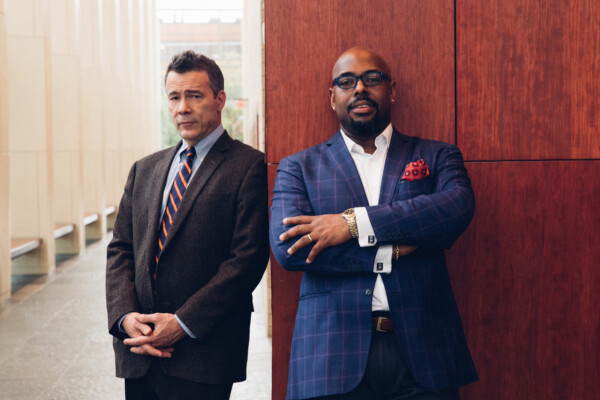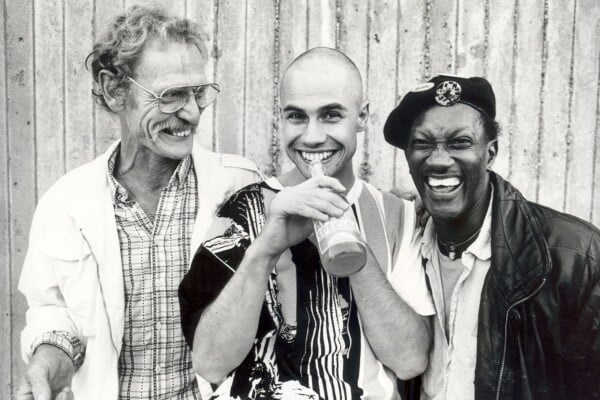The Perfect Setup: An Interview with Jason Brown
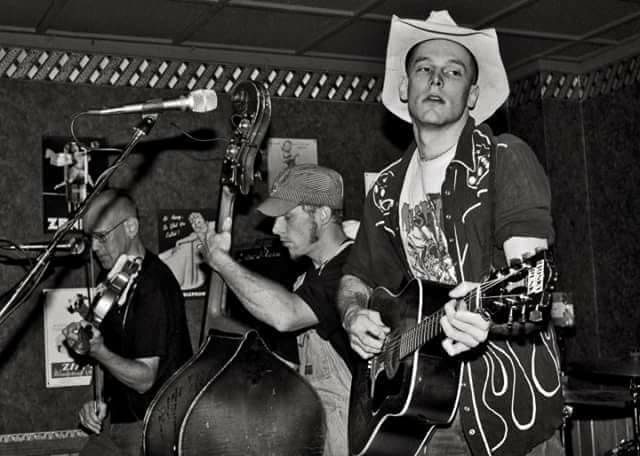
A proper setup on your bass can make a world of difference in the way it responds to your playing. That’s why it’s so important to have gurus like Jason Brown around to figure out exactly what every bass needs.
Brown is not only a luthier that specializes in the double bass, he’s a seasoned player that has three decades of laying down grooves under his belt. He’s fluent in many genres, especially rock and Americana. The bassist spent the better part of a decade playing, recording, and touring with Hank Williams III in addition to countless other gigs around the world.
His day work includes repairing and setting up basses for some of the world’s best players including Ron Carter, Carlitos Del Puerto, and more. He’s recently switched locations to offer his skills at The Guitar Shoppe in Laguna Beach, California.
We caught up with Brown to get the scoop on his background, how that affects his craft, and what bassists should do to maintain their instrument.
How did you get into bass? Did you start on electric or upright?
I got into bass because I found myself playing “air bass” all the time, and when you are at the air store, you can afford them all! Also, my best friend played violin and I wanted to do that, so my mom made me take piano… somehow it all led to bass. I started in electric, on a pawn shop J Bass then quickly discovered upright and fell for it. That was in the 80s.
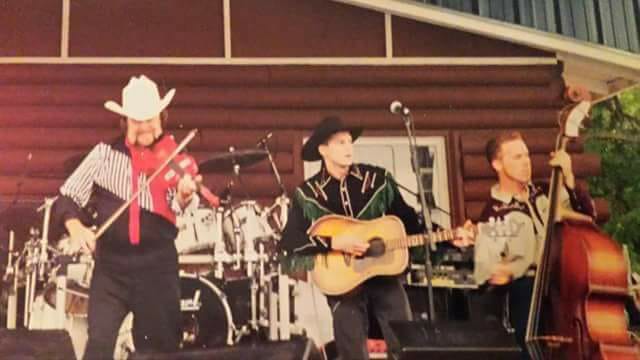
How did you land the gig with Hank Williams?
I met Hank III at the very beginning of his career in Branson, Missouri. He was 22 years old and had just begun doing a Hank Sr.-style show. We met at a gig I was doing in town and he asked if I would like to join his band. I said, “Absolutely.” I remember studying Hank’s 40 Greatest Hits and falling in love with the songs and sound. I wound up playing with him through the whole evolution into Assjack, and all the hard rock. I played with him for almost 7 years. He is a really good guy.
What was it like touring with your upright?
Touring with an upright was tricky, in my early days. I used to go over to Europe and borrow basses, which was really hit or miss. Later, Hank III’s manager got me an Anvil-style case which was insanely big and heavy. It was a really tough thing to deal with, but it went a lot of places, like Japan. Later I got a Gage case, and that was a lot more fun. Whenever they ask you if it is a cello in the airport, always say yes! It is a lot cheaper.
How did you get into working on basses?
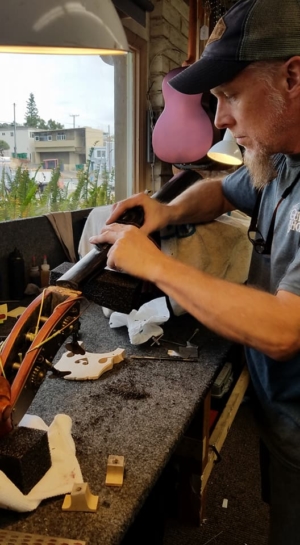 I got into lutherie at Moonstone Guitars, in Humboldt County, California. They build amazing acoustics and electrics. Soon after that I met Bob Daugherty and learned his methods of bass lutherie. He was one of the best ever, in my opinion, and I have spent the last 27 years practicing and applying much of the things that I learned from him and his basses. Bob is also an incredible player, and I think that has a lot to do with his instincts towards setups.
I got into lutherie at Moonstone Guitars, in Humboldt County, California. They build amazing acoustics and electrics. Soon after that I met Bob Daugherty and learned his methods of bass lutherie. He was one of the best ever, in my opinion, and I have spent the last 27 years practicing and applying much of the things that I learned from him and his basses. Bob is also an incredible player, and I think that has a lot to do with his instincts towards setups.
How does your playing and gigging affect your lutherie?
I play a lot of styles of music, and thus it is very important to my lutherie because it gives me first-hand insight into real-world conditions that affect the pro player. I can’t imagine how I would relate to lutherie without the ability to feel the bass first hand. I love playing jazz, and I love playing arco, and I find myself mimicking the style of whoever brings me their bass, so I can kind of see through their eyes. The benefit of this is also that I am lucky to work with some incredible players, and it raises my abilities just to interact with them and absorb a little of what they do. The skill of many of my clients is humbling, to say the least! Gigging has also taught me a lot about amplification, and playing with Hank III was a huge education in being loud.
Do you have a favorite part of fixing basses?
I love many aspects of fixing basses, but my favorite is probably doing a setup for someone and seeing them fall for their bass, all over again. I also love it when a bass that has fallen on hard times comes back to life and lives again. Something about that is very satisfying.
What’s the most common problem you see from clients with uprights and electric bassists?
The most common problems are probably setup issues. This really covers a lot of things, but it is rare that a bass is in good working order. There is always room for improvement, and all basses need a tuneup, at least, from time to time, even once set up well. Electric basses have a lot of room for improvement, too. There are many variables, from intonation to the neck and truss rod that all combine to make an instrument really feel and sound great.
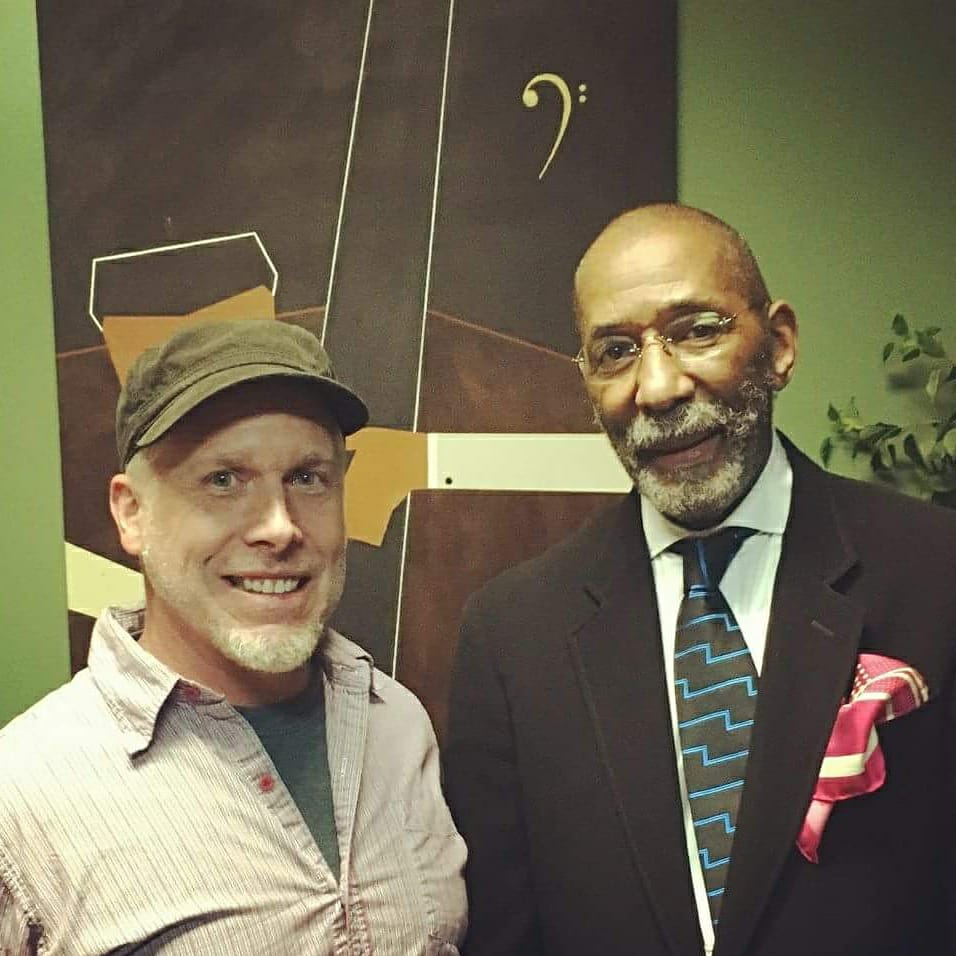
What makes the perfect setup for you?
The perfect setup has to first consider the person playing it. There are some fundamental principles common to a good setup, but integration with the player is paramount! My goal is to allow them the most effortless integration with their instrument so that they can easily unleash their imagination and expression through it. The setup is perfect when the owner of that bass says it is!
What’s a good routine bassists can do to maintain their instrument?
The best thing a player can do for their bass, besides protecting it from harm, is to keep it clean and keep the parts where they belong. Wiping down the strings and fingerboard is really a good idea, and it keeps things feeling familiar and easy to play. Tons of gunk all over the playing surfaces is a real drag, to me. For double basses keeping the bridge straight, adjusting for the seasonal changes, and using a dampit during dry spells are all good practices. Always set your bass in such a manner that it cannot fall. This sounds obvious, but in practice, I fix a lot of fallen instruments.
What’s the craziest thing you’ve been asked to do to an upright or an electric?
The craziest thing I ever encountered on a bass was one that had pick holes through it because of relationship troubles. Another one was a bass that had been in a steamer trunk, unopened, since the 60s. It was a nice instrument and lived, again! The weirdest thing, though, was an acoustic guitar that was made out of an armadillo. It looked like an Ovation but smelled like road kill. It was unforgettable!
What kind of advice do you have for bassists thinking about getting into instrument building and repair?
The best advice I could give to a person getting into lutherie is to first make sure you are really good at mechanical stuff. You need to think like an engineer when it comes to understanding the forces and geometry in play in a stringed instrument. The next advice is work really hard to understand your client! It is all about them, after all, not proving what you can do or know. I think you have to ask a lot of questions and take the time to know your clients, to really be able to make meaningful improvements in their musical world. I enjoy my clients, and many become great friends. This is really the best thing about doing what I do!

